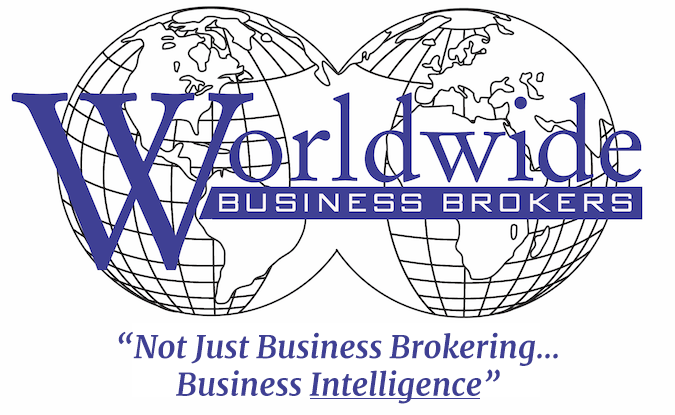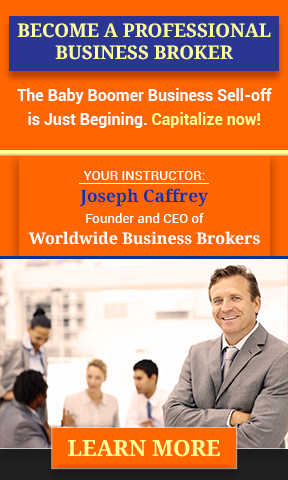Sell a Business for Equity.
Huh?!? Sell a business FOR equity?!? As the star of an old sitcom would say, Whatchu talkin’ ’bout, Willis?
When you sell a business, you’re supposed to SELL the equity, right?
 Well, as it happens, many M&A transactions, particularly in the Middle Market, include what is known as a “seller equity rollover”, a method of financing that essentially involves the seller of a business “rolling over” his or her equity in their own business – the one that is being acquired – for equity in the acquiring business. Sound a little confusing? If you’re a business broker – or a business owner considering a sale – you should be conversant in this component of business acquisition.
Well, as it happens, many M&A transactions, particularly in the Middle Market, include what is known as a “seller equity rollover”, a method of financing that essentially involves the seller of a business “rolling over” his or her equity in their own business – the one that is being acquired – for equity in the acquiring business. Sound a little confusing? If you’re a business broker – or a business owner considering a sale – you should be conversant in this component of business acquisition.
Last week’s post focused on using earn outs to close the gap between what a seller wants for a business and what a buyer is willing to pay. This post focuses on equity swaps, another method that knowledgeable business brokers and advisors know to use when trying to close that gap.
One of the main differences between an earn out and an equity swap or rollover is that the seller usually stays on with the business longer in a rollover that in an earn-out. This is why equity rollovers are a favored tool of private equity firms when they are acquiring all or substantially all of a business. They want the team that has managed the business they are acquiring to stick around and keep doing what they’ve been doing.
Many business transfers – especially those in the lower Middle Market – are financed using earn-outs. But equity swaps are popular in instances where a seller sees significant upside for the business in the medium to long term and, if the seller holds some equity in the acquiring company, the seller will benefit from the increase in value that the acquiring company will have.
Equity rollovers are typically structured as an exchange by the seller of all or a large portion of its equity in the company it’s selling for equity (stock or membership units) in the company that it is selling to. From the buyer’s perspective, this results in a reduction in the amount of cash the buyer needs to complete the purchase. The equity positions the seller gets can vary dramatically but generally range between 10% and 40%. In addition, the seller is generally offered certain rights and input regarding the future operation of the business.
If you’re a business broker dealing in the Middle Market, explaining this to your selling clients is an essential part of managing the seller’s expectations. You would be wise to explain early in your relationship with the seller what an equity rollover is and determine whether or not your seller would entertain the concept. This is not a tool that all sellers would consider nor is it one that is appropriate for all transactions. However, it is very useful in closing the gap between asked price and offered price.
Let’s look at a couple of examples
The Financial Acquisition
 A financial acquisition – as opposed to a strategic acquisition (see next section) – is generally pursued by a buyer that is interested in the existing and future cash flows of a company. In a financial acquisition, once a target is identified and a letter of intent is signed, the buyer will have a valuation done of the target company. There will almost always be a gap between what the seller thinks its company is worth and what the buyer feels it can pay.
A financial acquisition – as opposed to a strategic acquisition (see next section) – is generally pursued by a buyer that is interested in the existing and future cash flows of a company. In a financial acquisition, once a target is identified and a letter of intent is signed, the buyer will have a valuation done of the target company. There will almost always be a gap between what the seller thinks its company is worth and what the buyer feels it can pay.
One way to close this gap is to provide the seller the opportunity to continue to grow its business and, possibly, eventually realize a value even higher than it originally wanted by virtue of the increased value of the equity in the business over time.
Let’s say that Brandy Beaudine, owner of Brandy’s Better Bedframes, LLC, a business she started 15 years ago, wants to sell. Her objective is to turn the equity she created into cash. But she’s not ready to retire; she’s just not sure what to do next.
Her business has revenue of $6.7 million and discretionary earnings of $2.1 million. Her company has been growing handsomely and she feels it is worth $10 million. But her broker has brought her three offers – two from small private equity firms and one from a high net worth individual – all of which were only around $8 million. One common aspect of each of these offers was that Brandy stick around for a while.
If she didn’t want to stick around too long, her broker might advise that they suggest an earn-out to the buyers. But if she was willing to roll the dice and stick around for a few years, her broker might advise that they suggest an equity rollover to the buyers. Let’s look at how this might play out.

Brandy thinks her business, given its rate of growth, is worth $10 million. The buyers think $8M. Brandy and the buyers could agree to $7 million in cash and Brandy retains 25% of the company (or the new company formed for the acquisition).
Brandy continues doing what she and her team have been doing and five years later the business is now worth $16 million. According to her equity agreement, she can sell her equity to the other owners. How does everybody make out?
Brandy got $7 million up front but now owns 25% – $4 million – of a $16 million company. The bottom line for Brandy is $11 million. If she had accepted one of the $8 million offers, could she have invested that money at 10% annual interest? Not in normal markets.
How about the buyers? They bought 75% of the business for $7 million, slightly more than what they originally wanted to pay – 75% of $8 million is $6 million – but they also bought Brandy. They now own 75% – or $12 million – of a $16 million company. A roughly 14% annual return on their initial investment.
That is a too simple explanation of an equity rollover but it is a clear example of the concept.
Strategic Acquisition
Our old friend Waldo, owner of Milwaukee-based Waldo’s Wonderful Widgets, is looking to expand by acquiring a business that makes widget molds. Doing so would allow Waldo to reduce his costs by bringing the manufacturing of widgets in house and expand his market by offering to sell widgets at wholesale to his competitors.
Waldo’s broker finds Molly’s Meticulous Molds, Inc. out in Dallas, a business that Waldo’s broker estimates has a value of $8 million. Waldo makes an offer of $5 million in cash and 15% equity in Waldo’s Wonderful Widgets.

Now, Molly would want to know what Waldo’s business was worth because that 15% of Waldo’s is, like the cash being offered, what she’ll be receiving for her business. She hires a professional business broker to value Waldo’s and the result is $25 million. Her 15% is worth $3.75 million. Add that to the $5 million in upfront cash and Molly is being offered $8.75 million, a premium over her business’ current value.
But Molly has to stay on for several years and there will be a lock-up provision on her equity, likely timed to period she stays with the acquiring company. On the assumption that Waldo’s Wonderful Widgets, by acquiring Molly’s Meticulous Molds and tying Molly to the business for a certain amount of time, grows handsomely over the next few years, both Waldo and Molly will benefit financially.
Again, this is another simple explanation of an equity rollover but it is also a clear example of the concept.
A Cautionary Note…
The examples I describe above are very simplistic. From voting rights, board seats and vesting periods to non-compete agreements, lock-up periods and compensation, there are dozens of moving parts in an equity rollover and professional advisors experienced in such transactions are required. As the saying goes, don’t try this at home.
Our course, The “How-To” of Becoming a Business Broker”, teaches how to structure the financing of a business acquisition including using earn-outs and equity rollovers. Learn more…
Become a Professional Business Broker…
The Bottom Line
An equity rollover offers a number of compelling benefits to both buyer and seller.
- It incentivizes the owners of the company being acquired.
- Those owners get to participate in the future appreciation of the value of the acquiring company.
- Those owners get to participate in any future sale or IPO of the acquiring company at its appreciated value.
- It aligns the interests of the acquired company’s owners with those of the acquiring company.
- It bridges financing and valuation gaps.
But, if you’re a business broker, there is one caveat that you should keep in mind. Because an equity rollover usually entails the seller’s continuing involvement in managing the business for several years, this will NOT likely be a solution to older owners that are interested in retiring.
If you have any questions, comments or feedback on this topic – or any topic related to business – I want to hear from you. Put them in the Comments box below. Start the conversation and I’ll get back to you with answers or my own comments. If I get enough on one topic, I’ll address them in a future post or podcast.
I’ll be back with you again next Monday. In the meantime, I hope you have a profitable week!
Joe
#business #businessacquisition #sellabusiness #becomeabusinessbroker #businessbrokering #businessvaluation #MergersandAcquisitions
The author is the founder of Worldwide Business Brokers and holds a certification from the International Business Brokers Association (IBBA) as a Certified Business Intermediary (CBI) and can be reached at jo*@*******************og.com

